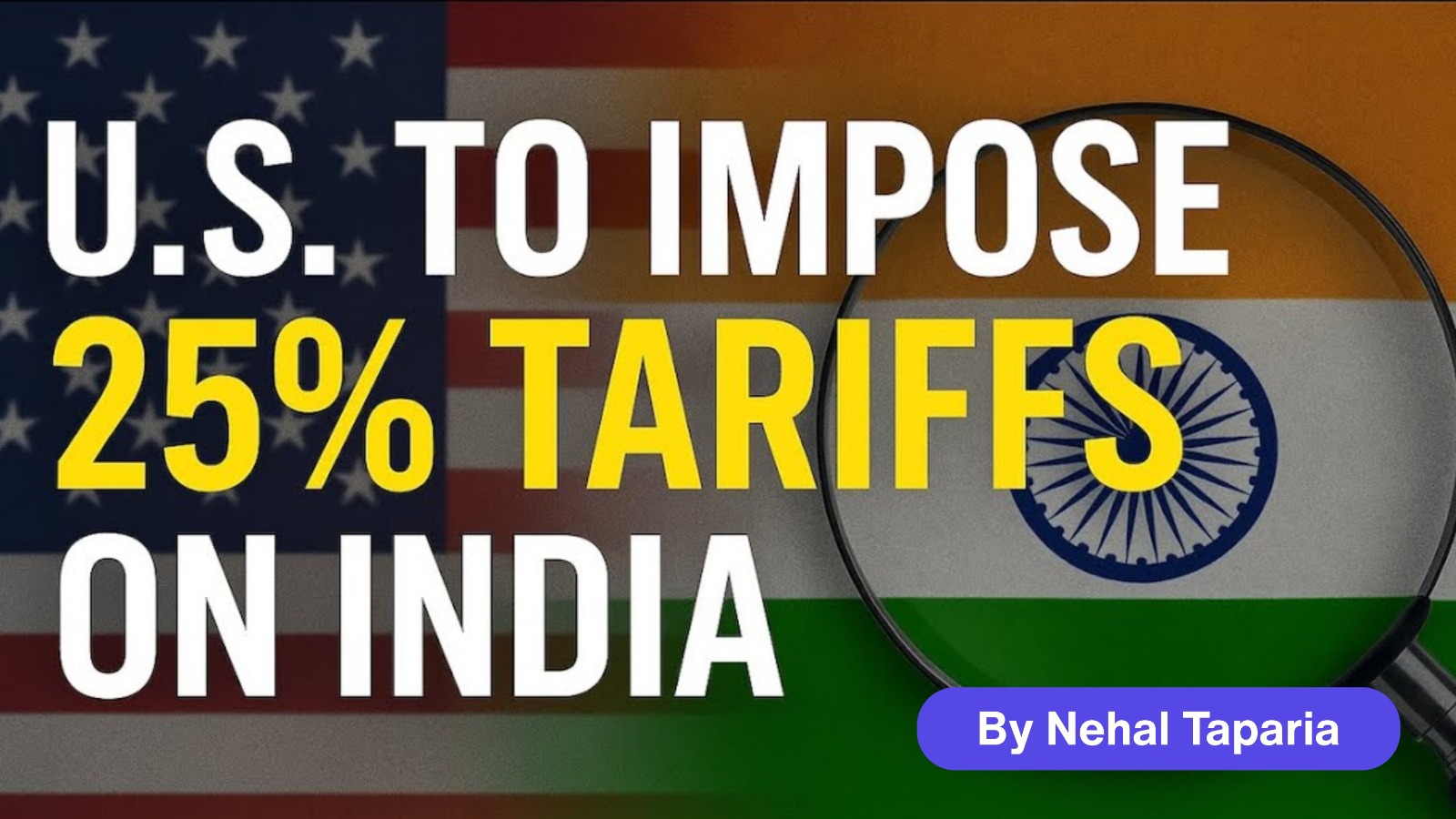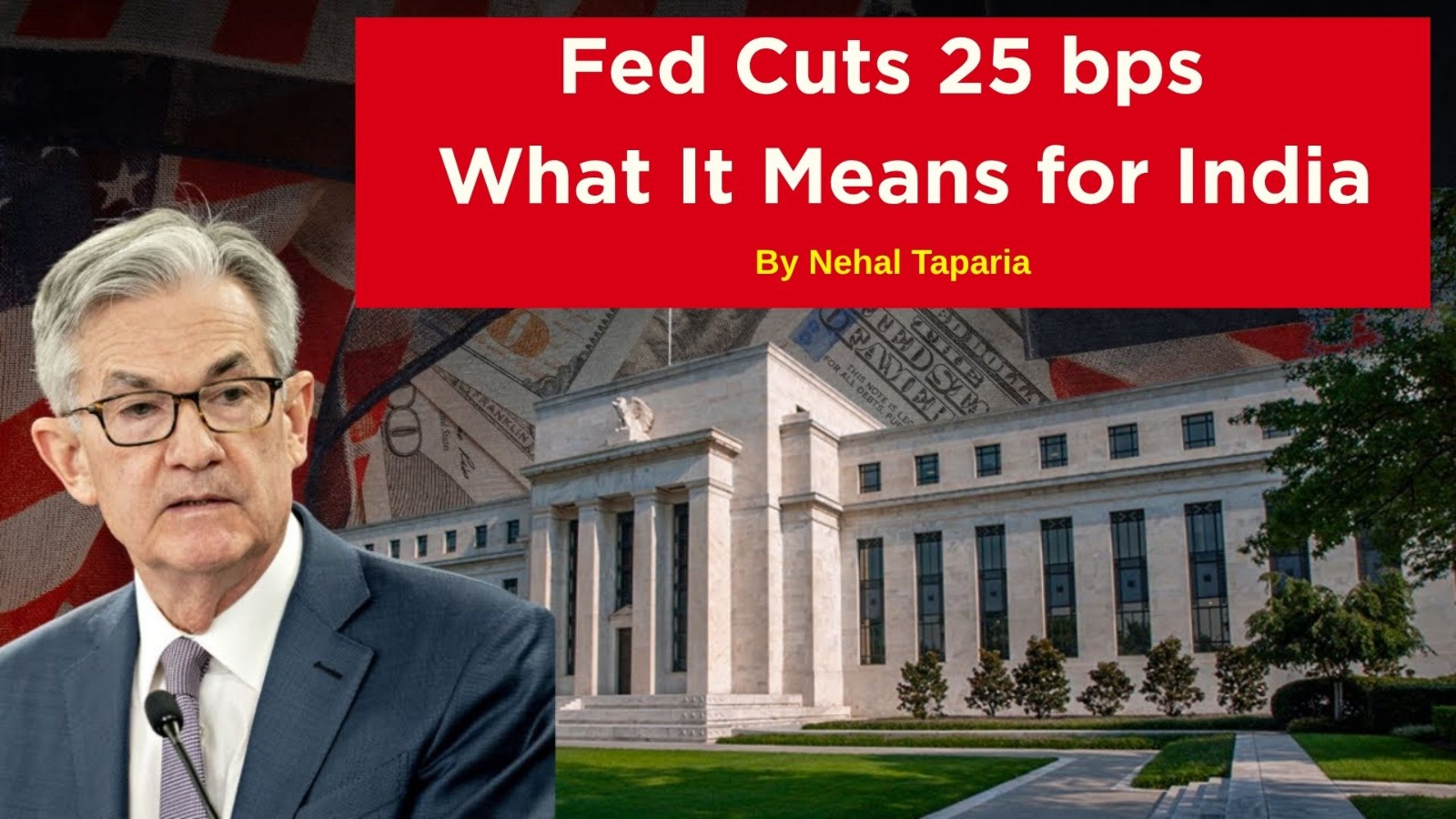Unfriending India? The 25% Tariff Shock and What It Means for India

Unfriending India? The 25% Tariff Shock and What It Means for India
In early August 2025, the U.S. government abruptly imposed a 25% tariff on nearly all goods imported from India, effective August 7. Former President Trump justified the move citing India’s tariff policies, trade imbalance, and continued purchase of Russian oil and defense equipment—a decision framed as “penalties” against those actions.
What Is the U.S. Tariff Policy and Its Rationale?
- A flat 25% duty now applies broadly to Indian exports—a marked increase over previous rates that ranged from 0–10% depending on product categories.
- Trump also threatened additional tariff hikes, especially targeting India’s ongoing Russian oil purchases, claiming India resells discounted oil at a profit.
- While negotiations remain on-going, indicators suggest this tariff regime could be long-lasting rather than a temporary flashpoint.
India’s Policy Response
- The Modi government has rolled out support measures: encouraging producers to build strong domestic brands, offering reduced testing fees for small exporters, and introducing employment-linked export schemes targeting sectors like marine products.
- A strong push on "Made in India" now drives diplomatic messaging and consumer campaigns, reinforcing economic resilience amid U.S. pressure.
Impact on Key Sectors and Indian Markets
Textiles & Apparel
Indian garment and home textile exporters risk losing competitiveness—tariffs on Indian shipments are 5–6 percentage points higher than most of India’s Asian peers like Vietnam or Bangladesh, denting profit margins and volumes.
Pharmaceuticals
Though Indian pharma previously enjoyed tariff exemptions, a full coverage under the 25% levy could reduce revenues by 2–8% in FY26 and increase U.S. drug prices sharply, magnifying pressure on margins.
Gems & Diamonds
Indian viewership dominates in polished diamonds. With ~36% of CPD exports heading to the U.S., the new tariff threatens rerouting to hubs like Dubai and Belgium—impacting volumes and pricing.
Auto Components & Engineering Goods
About 27% of auto‑component exports head to the U.S. Expect margin pressure and diversification efforts as exporters shift focus to other markets like Asia and Europe.
Chemicals & Agrochemicals
The sector, which derives ~18% of its exports from the U.S., faces squeezed cost advantage—territory ceded to competing producers like China and Europe operating under lower tariffs.
Regional Vulnerability: West Bengal
Leather, textile, and tea producers in Bengal are highly exposed—20% of leather exports (~₹2,000 crore) go to the U.S., making local clusters in Topsia and Bantala particularly at risk.
Effect on Indian Markets & Economy
- Key equity indices like Nifty and Sensex saw immediate negative sentiment—the Nifty future slumped ~0.7% on news of tariffs.
- The MSCI India ETF (INDA) dropped ~6% in the past month and remains under pressure as FIIs pull out.
- Financial institutions estimate a 0.2–0.3 percentage-point drag on India’s GDP growth for FY26; SBI and ICRA have lowered forecasts accordingly.
- Currency volatility may rise, and investor sentiment remains cautious amid diplomatic uncertainty.
Summary Table
|
Impact Area |
Effect Highlights |
|
Key Export Sectors |
Steep import duties will compress margins and reduce competitiveness |
|
Indian Stock Markets |
Negative sentiment and capital flow uncertainties; ETFs under pressure |
|
Economic Growth |
GDP growth forecast trimmed by ~0.2–0.3 pp in FY26 |
|
U.S. Cost to Consumers |
Consumer prices rise notably on apparel, footwear, auto, textiles |
|
Policy Response |
Government promoting branded exports, diversification and domestic resilience |
This tariff shift marks a dramatic escalation in India–U.S. trade tensions. Indian markets will likely remain volatile in the near term, especially in sectors most exposed to U.S. trade. Long-term survival hinges on strategic diversification, stronger domestic value chains, macro-political clarity, and expanded global engagement beyond U.S. dependency.
By Nehal Taparia
This content is for educational and knowledge purposes only and should not be considered as investment or Trading advice. Please consult a certified financial advisor before making any investment or Trading decisions.
Our Recent FAQS
Frequently Asked Question &
Answers Here
Q1. Why has the U.S. imposed such steep tariffs on Indian goods?
Because of trade imbalance concerns, India’s high domestic tariffs, and especially its continuing purchase of discounted Russian oil and military hardware—a series of actions framed by U.S. leadership as unacceptable support to Moscow
Q2. Which sectors are most vulnerable?
Textiles, apparel, pharmaceuticals, gems & jewellery, auto components, chemicals, agrochemicals, leather, marine products and tea—these face direct cost and volume pressures under new tariffs.
Q3. Will Indian pharma be exempted like before?
Currently yes—but that exemption may change. Even with limited tariff exposure, margins and export volumes could shrink if penalties extend further
Q4. How will U.S. consumers feel the impact?
Tariffs will likely raise U.S. consumer prices—especially on clothing, leather goods (up to +40%), apparel (+38%) and textiles in the short run, while auto and food prices could also be pressured.
Q5. What can Indian exporters and policymakers do?
Government support: brand building, sectoral export incentives, testing fee relief, employment-linked schemes. Exporters must diversify markets, reduce costs, and boost quality & branding under “Make in India” resilience drive.
Copyright © By Empirical F&M Academy. Design & Developed by Techno Duniya


.jpg)


.jpeg)




